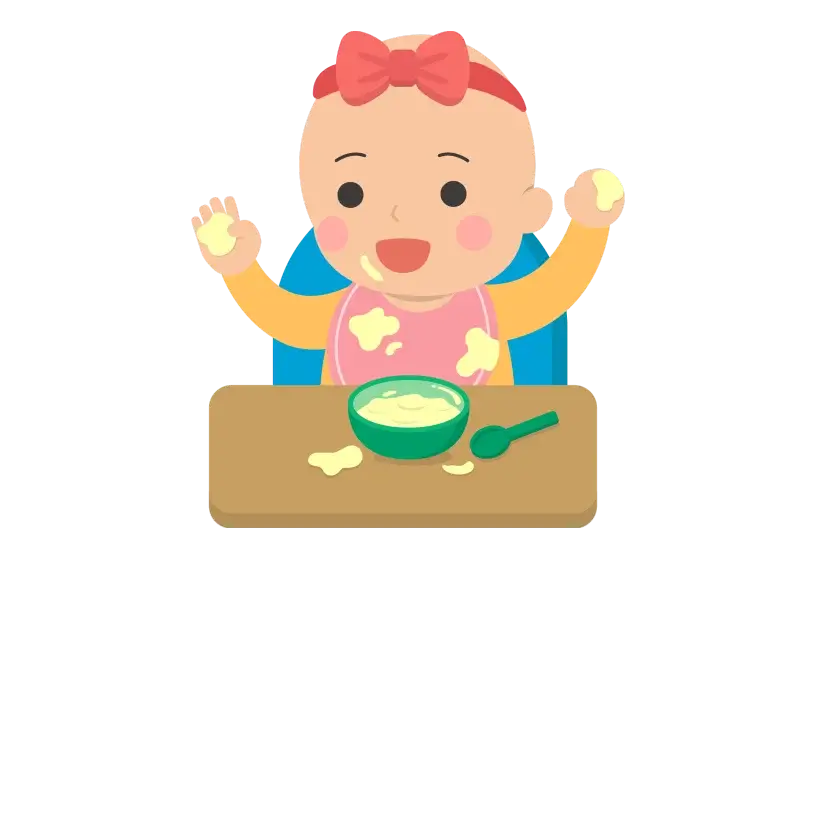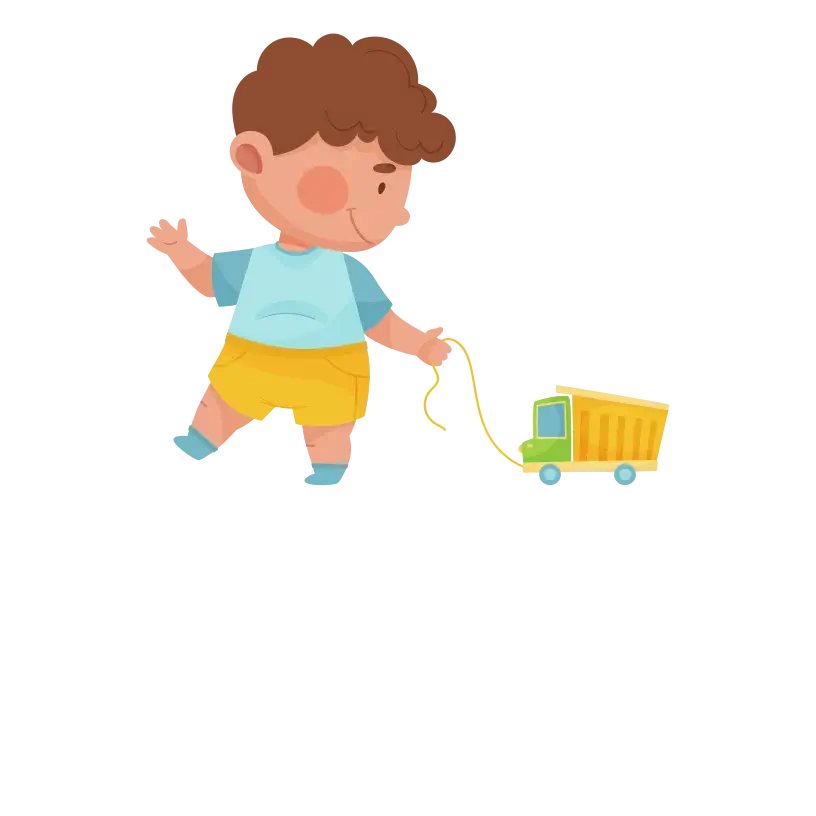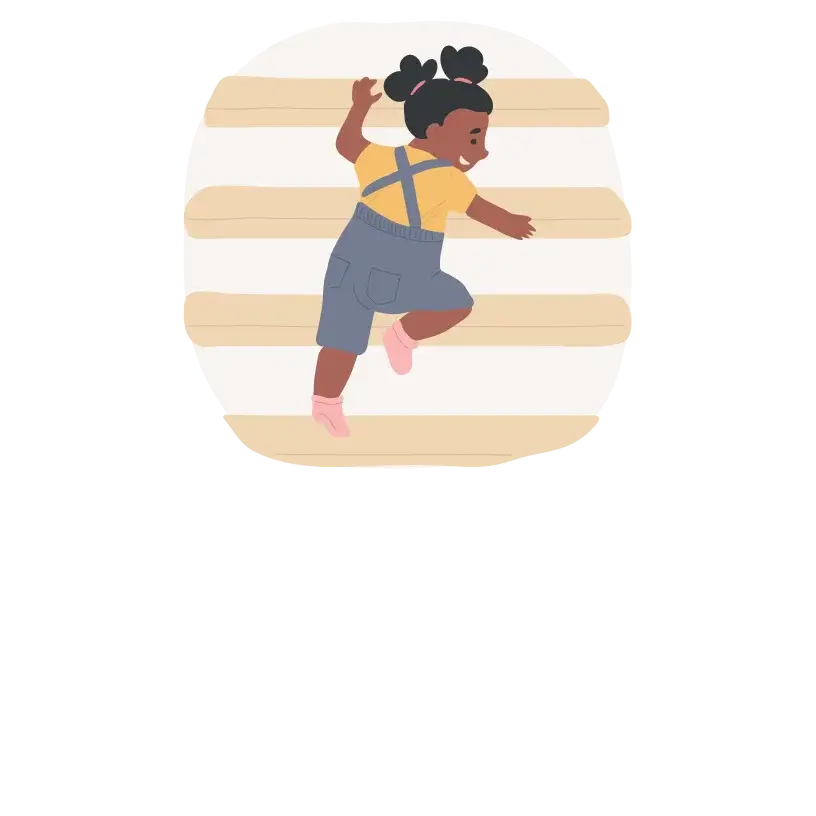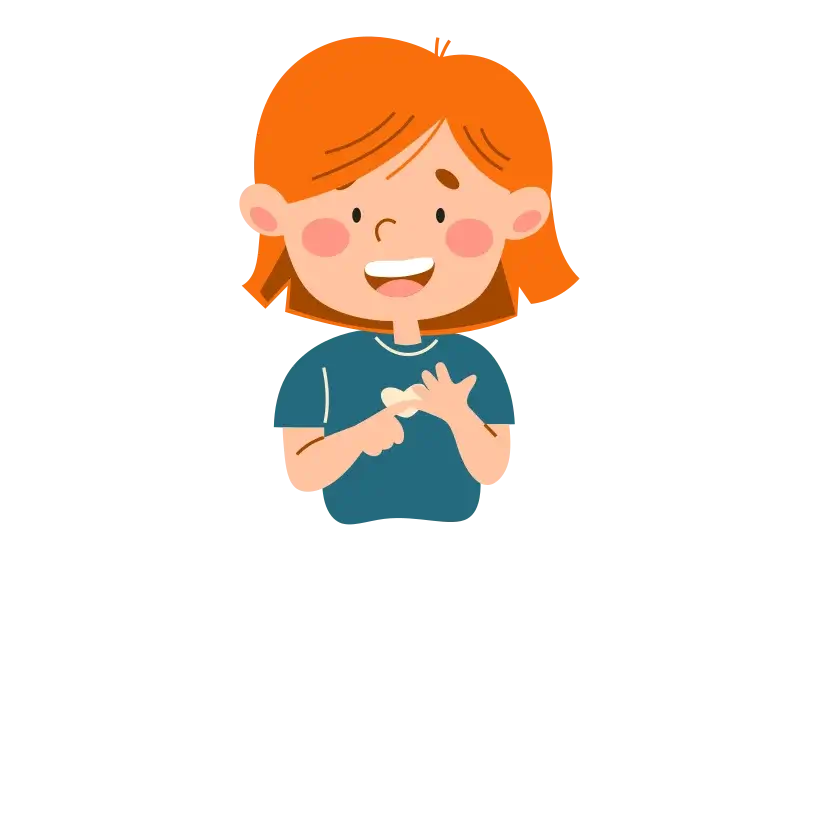Menu

It seems like you’re noticing the striking difference as your child grows. One moment, they still seem like your baby, needing your cuddles and care, and the next, they’re displaying all the traits of a little kid, with newfound independence and personality shining through.
Time seems to move both fast and slow simultaneously, doesn’t it? But through all the changes, there’s a world of wonderful experiences ahead for you and your child. And don’t worry if they resist snuggles now; many toddlers go through phases, and in just a few months, they may eagerly return to those cuddles, reminding you they’ll always be your little ones, no matter how big they get.
At twenty months old, toddlers often exhibit a duality in their behaviour: they can be fun-loving and challenging. Your little one might resist getting dressed, bathing, or going to bed because they’re beginning to assert their independence and want to control their environment.
To manage this stage, provide opportunities for your child to feel empowered and involved in their daily routines. Allow them to choose their clothes or pyjamas, even if it means mismatched outfits, and involve them in tasks like pouring their drink or picking out a bedtime story.
By giving them a sense of autonomy and allowing them to make simple decisions, you can help reduce resistance and foster a sense of cooperation. Instead of imposing tasks on them, offer choices and involve them in the process, empowering them to take ownership of their actions.
According to the World Health Organization’s data from the outset, the average weight for a 20-month-old girl is around 24.4 pounds, while for boys, it’s approximately 25 pounds. Girls typically measure around 32.6 inches in height, while boys average about 33.1 inches.
These figures provide general benchmarks, but individual growth rates may vary. If you have concerns about your child’s growth, consulting with their paediatrician is advisable.
If your 20-month-old has a fever above 102°F (38.9°C) for more than one day with no other symptoms, it’s important to contact your healthcare provider. If they have additional symptoms like a cold, cough, or diarrhoea, it’s a good idea to contact the doctor sooner, especially if these symptoms are severe. If the fever lasts more than three days, contact your healthcare provider as well.
Several factors can contribute to constipation in toddlers, including withholding bowel movements, dietary changes, disruptions in routine, certain medications, cow’s milk allergy, family history, or medical conditions. If you notice these symptoms, it’s essential to address them promptly. Encouraging hydration, offering fibre-rich foods, and ensuring regular physical activity can help prevent and alleviate constipation in your 20-month-old. If concerns persist, consulting with a healthcare provider is advisable.
Viruses or bacteria affecting the intestines can lead to diarrhoea in young children. Mild cases typically involve a few loose bowel movements, while severe diarrhoea results in watery stools. It’s crucial to prevent dehydration, especially during episodes of diarrhoea. Avoiding fruit juices and soft drinks is recommended because they can exacerbate diarrhoea due to their high sugar content and osmotic effect on the intestines, potentially worsening symptoms and prolonging recovery.
It’s important to be aware of common respiratory infections like croup. Which typically affects children under three and is more prevalent in late fall and winter. This viral illness presents with a distinctive cough resembling a seal’s bark and high-pitched breathing, which can be alarming for both parents and their little ones. If a child develops croup, steps can be taken to ease their discomfort, such as using a cool mist humidifier in their room and creating steam in the bathroom to allow them to breathe warm, moist air. However, seeking immediate medical attention is crucial if a child’s breathing becomes noisy even when resting
At around 20 months old, some children may start showing signs of readiness for potty training. This could include showing interest in the bathroom, indicating when they need to go, or being able to stay dry for longer periods. It’s a good idea to consider buying a training potty seat and introducing the concept of potty training through books or discussions.
It’s important not to pressure your child to start potty training before they’re truly ready. Most children aren’t fully prepared to begin until around 24 months old, so it’s best to wait until they show consistent signs of readiness before starting the process.
At 20 months, toddlers may display tantrums to express frustration or assert independence. These outbursts can involve crying, screaming, and even physical resistance when they don’t get their way or feel overwhelmed by emotions.
Some 20-month-olds may resort to biting as a means of communication or self-expression, especially when they lack the language skills to express their needs or feelings verbally. Biting can also react to stress, frustration, or a desire for attention.
Toddlers at this age might exhibit hitting behaviour as they experiment with physical actions and boundaries. Hitting may occur in response to feeling angry or threatened or simply to explore cause and effect.
At 20 months, toddlers often desire to assert control or establish dominance in social interactions, which may lead to behaviours such as pushing. Additionally, they may push others in response to feeling crowded or overwhelmed in certain situations.
At 20 months, toddlers may experience separation anxiety when separated from their primary caregivers or familiar environments. This can manifest as clinginess, crying, or distress when faced with separations, such as daycare drop-offs or bedtime routines.
Your child can enjoy a wide variety of foods, so it is beneficial to offer them a balanced diet that includes a variety of nutritious options. Each meal should contain a mix of food groups to ensure they receive the necessary nutrients for growth and development.
Ensure your child receives a portion of animal foods like milk, dairy, eggs, meat, fish, or poultry daily, along with legumes such as chickpeas, lentils, peas, or nuts, and plenty of orange or green vegetables and fruits. Adding oil or fat to their meals provides essential energy for their active lifestyle.
For snacks, choose healthy choices like fresh fruits, which provide vitamins, minerals, and fibre without added sugars or unhealthy fats. By offering diverse nutritious foods, you can help support your child’s health and well-being as they grow and explore new tastes and textures.
As your toddler approaches their second birthday, their food preferences constantly evolve. To make mealtimes enjoyable and supportive of their growing independence, consider these tips:
Most children typically require approximately 11 to 12 hours of uninterrupted nighttime sleep and a daytime nap between 1.5 to 3 hours. This totals about 13 to 14 hours of sleep in 24 hours.
Some parents start thinking about moving their toddlers from a crib to a bed at this age, especially if they’re worried about their little one trying to escape!
Although transitioning from a crib to a toddler bed typically occurs between 18 months and three years old. If you’re concerned about your 20-month-old climbing out of their crib, try lowering the mattress to see if it makes a difference.
Regression in sleep patterns can occur when a child who used to sleep well suddenly starts waking up more frequently, which can be quite disorienting for parents. Various factors can trigger this regression, such as teething, illness, or disruptions to their sleep routine, like travelling or holidays.
To address the issue and return to normal sleeping patterns, it’s essential to identify the underlying cause. Stick to your usual bedtime routine and set clear limits to help your child readjust and get back on track with their sleep habits. By maintaining consistency and addressing the root of the problem, you can support your child through this temporary phase of sleep regression.
Establish a consistent bedtime routine, aiming to put your toddler to bed around the same time every evening. However, be flexible if your child isn’t tired enough or tires out earlier than usual. Avoid letting them go to bed overtired or too alert and wakeful.
Create a bedtime ritual to help your toddler transition into a sleep mindset. This could involve a warm bath, brushing teeth, and reading bedtime stories.
Before starting the bedtime routine, engage in quiet activities with your child to help them relax and reduce energy levels. Drawing or doing puzzles can be ideal activities for this time of day.
Your child may find it easier to settle down for sleep if you stay in the room for a while. Consider sitting nearby and engaging in quiet, relaxing activities like reading. Gradually reduce your time in the room as your child becomes more comfortable falling asleep independently.
Establish a consistent bedtime routine, aiming to put your toddler to bed around the same time every evening. However, be flexible if your child isn’t tired enough or tires out earlier than usual. Avoid letting them go to bed overtired or too alert and wakeful.
Create a bedtime ritual to help your toddler transition into a sleep mindset. This could involve a warm bath, brushing teeth, and reading bedtime stories.
Before starting the bedtime routine, engage in quiet activities with your child to help them relax and reduce energy levels. Drawing or doing puzzles can be ideal activities for this time of day.
Your child may find it easier to settle down for sleep if you stay in the room for a while. Consider sitting nearby and engaging in quiet, relaxing activities like reading. Gradually reduce your time in the room as your child becomes more comfortable falling asleep independently.

As your child transitions from 1 to 2 years old, their visual capabilities significantly develop. By age 2, they can discern intricate details and perceive well-developed depth. To support this development, as a caregiver, you play a vital role in providing enjoyable and visually stimulating environments.
Engage your toddler with colourful picture books, interactive toys, and outings to places like the park or grocery store, where they can explore different sights.

By 20 months, toddlers begin comprehending simple commands and recognising familiar objects and family members’ names. While their language skills are still budding, they excel at nonverbal communication.
Encouraging their love for auditory experiences, such as through children’s songs or playing with friends, can further support their language development and cognitive growth.
Toddlers also become more aware of different smells as they grow. Introducing them to various aromas during meals or outings can help them develop an appreciation for different scents.
Encouraging descriptive language during these experiences can help them express their sensory experiences and develop their language skills.

Toddlers develop their ability to taste different flavors as they grow. By introducing a variety of foods during meals, you can help expand their palate and encourage them to try new tastes.
Even if they initially reject certain foods, repeated exposure can help them become more open to different flavors.

Despite their constant movement, toddlers still seek affection and reassurance from caregivers. Show your love through cuddles and kisses to reinforce their sense of security. Ensure your home is childproofed for safe exploration and address behaviours like hitting by teaching alternative ways to express emotions.
By nurturing their social, emotional, and physical development, you create a supportive environment for your toddler’s growth.

As your child transitions from 1 to 2 years old, their visual capabilities significantly develop. By age 2, they can discern intricate details and perceive well-developed depth. To support this development, as a caregiver, you play a vital role in providing enjoyable and visually stimulating environments.
Engage your toddler with colourful picture books, interactive toys, and outings to places like the park or grocery store, where they can explore different sights.

By 20 months, toddlers begin comprehending simple commands and recognising familiar objects and family members’ names. While their language skills are still budding, they excel at nonverbal communication.
Encouraging their love for auditory experiences, such as through children’s songs or playing with friends, can further support their language development and cognitive growth.
Toddlers also become more aware of different smells as they grow. Introducing them to various aromas during meals or outings can help them develop an appreciation for different scents.
Encouraging descriptive language during these experiences can help them express their sensory experiences and develop their language skills.

Toddlers develop their ability to taste different flavors as they grow. By introducing a variety of foods during meals, you can help expand their palate and encourage them to try new tastes.
Even if they initially reject certain foods, repeated exposure can help them become more open to different flavors.

Despite their constant movement, toddlers still seek affection and reassurance from caregivers. Show your love through cuddles and kisses to reinforce their sense of security. Ensure your home is childproofed for safe exploration and address behaviours like hitting by teaching alternative ways to express emotions.
By nurturing their social, emotional, and physical development, you create a supportive environment for your toddler’s growth.
Fussiness: Pay close attention to your child’s crying patterns. If you notice an increase in the frequency or intensity of crying, it could be a sign that they’re experiencing discomfort or pain. Listen for different types of cries, as they may vary depending on the cause of discomfort.
Changes in Sleep Patterns: Record your child’s sleep habits. Look out for difficulty falling asleep, frequent awakenings during the night, or restless sleep. These changes in sleep patterns may indicate that your child is uncomfortable or in pain. Evaluate their sleep environment for any factors disrupting their rest, such as discomfort from teething or illness.
Changes in Appetite: Monitor your child’s eating habits closely. A decreased appetite or refusal to eat may be a sign of discomfort, especially if accompanied by other symptoms like fussiness or irritability. Conversely, increased appetite could also indicate discomfort if symptoms like diarrhoea or vomiting accompany it.
Changes in Behaviour: Observe your child’s behaviour for any unusual signs. Increased clinginess, agitation, or withdrawal may indicate that they’re not feeling well. Pay attention to their interactions with others and any changes in their mood or temperament.
Physical Symptoms: Look for any physical symptoms your child may be experiencing. Check for signs of illness such as fever, vomiting, diarrhoea, coughing, congestion, or difficulty breathing.
Rubbing or Touching a Specific Body Part: If your child repeatedly rubs or touches a particular area of their body, it could be a sign of discomfort or pain in that area. This behaviour may indicate issues like teething discomfort, an injury, or discomfort from illness.
Changes in Mood or Activity Level: Take note of whether your child appears more lethargic or less interested in activities they usually enjoy. Pay attention to any changes in their activity level, such as decreased exploration or playfulness. These changes could indicate they’re not feeling well and are experiencing discomfort.

At 20 months old, your child is likely becoming more confident in their walking abilities. They may now have the coordination and balance to walk while pulling toys behind them. This milestone demonstrates improved gross motor skills, coordination, and a growing sense of independence and exploration.

Your child is learning to navigate stairs with some assistance, such as holding onto a railing or a parent’s hand. This milestone shows progress in their gross motor skills, coordination, and ability to follow simple instructions and understand spatial relationships.

Your child’s cognitive skills develop as they take toys apart and reassemble them. This milestone demonstrates problem-solving abilities, spatial reasoning, and fine motor skills. It also shows curiosity and exploration as they investigate how things work.

Your child is exploring cause and effect by flipping switches on and off. This milestone indicates their growing understanding of how objects in their environment function. It also demonstrates their ability to use their hands with purpose and intention.

Your child may be starting to grasp the concept of counting and numbers. While their counting skills may be limited to just a few numbers, such as counting to three, this milestone marks the beginning of their numerical understanding. It shows early mathematical development and cognitive growth.

Your child is beginning to express likes and dislikes and show preferences for certain toys, activities, or people. This milestone reflects their growing sense of individuality and autonomy. It also indicates their ability to make choices and assert their preferences, an important aspect of their social and emotional development.

Your child is starting to imitate simple gestures, such as waving goodbye or clapping their hands. This milestone demonstrates their emerging social and communication skills. It also shows their ability to observe and mimic the actions of others, which is an important aspect of language development and social interaction.

At 20 months old, your child is likely becoming more confident in their walking abilities. They may now have the coordination and balance to walk while pulling toys behind them. This milestone demonstrates improved gross motor skills, coordination, and a growing sense of independence and exploration.

Your child is learning to navigate stairs with some assistance, such as holding onto a railing or a parent’s hand. This milestone shows progress in their gross motor skills, coordination, and ability to follow simple instructions and understand spatial relationships.

Your child’s cognitive skills develop as they take toys apart and reassemble them. This milestone demonstrates problem-solving abilities, spatial reasoning, and fine motor skills. It also shows curiosity and exploration as they investigate how things work.

Your child is exploring cause and effect by flipping switches on and off. This milestone indicates their growing understanding of how objects in their environment function. It also demonstrates their ability to use their hands with purpose and intention.

Your child may be starting to grasp the concept of counting and numbers. While their counting skills may be limited to just a few numbers, such as counting to three, this milestone marks the beginning of their numerical understanding. It shows early mathematical development and cognitive growth.

Your child is beginning to express likes and dislikes and show preferences for certain toys, activities, or people. This milestone reflects their growing sense of individuality and autonomy. It also indicates their ability to make choices and assert their preferences, an important aspect of their social and emotional development.

Your child is starting to imitate simple gestures, such as waving goodbye or clapping their hands. This milestone demonstrates their emerging social and communication skills. It also shows their ability to observe and mimic the actions of others, which is an important aspect of language development and social interaction.
Drawing with Crayons: Set up a designated drawing area with large sheets of paper and washable crayons. Encourage your child to explore making marks on the paper, whether scribbling, drawing lines, or making shapes. Offer praise and encouragement as they experiment with different movements, fostering their fine motor skills and creativity.
Learning Body Parts: Use interactive songs and games to help your child learn and name different body parts. Sing songs like “Head, Shoulders, Knees, and Toes” while touching each body part, or play “Simon Says” using body parts as commands. This activity promotes language development, body awareness, and listening skills.
Reading Together: Set aside dedicated time daily to read with your child. Choose age-appropriate books with colourful illustrations and engaging stories. Encourage your child to interact with the story by pointing to pictures, making animal sounds, or repeating familiar phrases. Reading together promotes language development, vocabulary expansion, and a love for books and learning.
Playing with Blocks: Provide your child with various blocks in different shapes, sizes, and colours. Encourage them to stack the blocks to build towers or other structures. As they play, talk to them about the blocks’ colours, shapes, and sizes, helping them develop their spatial awareness, hand-eye coordination, and problem-solving skills.
Doing Chores Together: Involve your child in simple household chores they can safely participate in. For example, let them help set the table by placing utensils or napkins, give them a mini-broom to sweep up small spills, or provide a cloth to wipe surfaces. Make the chores fun by turning them into games, and praise their efforts to instil a sense of responsibility and accomplishment.
Using Imagination: Create opportunities for imaginative play by providing dress-up clothes, props, and open-ended toys like cardboard boxes, blocks, or dolls. Encourage your child to use their imagination to create stories and scenarios, whether pretending to be a doctor, building a fort, or going on a magical adventure. Join the play and follow your child’s lead, fostering creativity, social skills, and problem-solving abilities.
Your 20-month-old may wake up at night for various reasons, including discomfort from teething pain or illness. Additionally, mild separation anxiety, where they seek reassurance from familiar caregivers like “Where’s Mommy? Where’s Daddy?” can also contribute to nighttime awakenings. Dreams and nightmares may also affect toddlers at this age, as they have difficulty distinguishing between fantasy and reality.
It’s essential to be mindful of the books your toddler sees before bedtime and ensure the content is mild to avoid triggering unsettling dreams. Introducing a comfort item like a lovie or blanket can provide reassurance and help soothe your child back to sleep when they wake up during the night.
At around 20 months old, toddlers typically require about 11 to 14 hours of sleep in 24 hours. This includes nighttime sleep as well as one or possibly two daytime naps. However, it’s important to note that every child is unique, and their sleep patterns can vary significantly. Some toddlers may sleep less at night and take longer or more frequent naps during the day, while others may sleep more consistently throughout the night with shorter daytime naps.
At 20 months old, children typically haven’t developed a full understanding of acceptable behavior and consequences until they are three years old, so they often don’t grasp the concept of discipline yet.
It’s not too early to start introducing the alphabet to your 20-month-old, but keep the activities fun and interactive. You can incorporate letters into everyday activities like singing the alphabet song, reading alphabet books, or pointing out letters in their environment. However, don’t expect them to fully grasp the concept of letters and their sounds at this age.
Ensuring a well-rounded diet filled with nutritious foods is essential, but it’s also beneficial to introduce a variety of flavours and textures to keep meals exciting. Here’s a sample daily meal plan for a 20-month-old, along with recommended milk servings:
Your 20-month-old may wake up at night for various reasons, including discomfort from teething pain or illness. Additionally, mild separation anxiety, where they seek reassurance from familiar caregivers like “Where’s Mommy? Where’s Daddy?” can also contribute to nighttime awakenings. Dreams and nightmares may also affect toddlers at this age, as they have difficulty distinguishing between fantasy and reality.
It’s essential to be mindful of the books your toddler sees before bedtime and ensure the content is mild to avoid triggering unsettling dreams. Introducing a comfort item like a lovie or blanket can provide reassurance and help soothe your child back to sleep when they wake up during the night.
At around 20 months old, toddlers typically require about 11 to 14 hours of sleep in 24 hours. This includes nighttime sleep as well as one or possibly two daytime naps. However, it’s important to note that every child is unique, and their sleep patterns can vary significantly. Some toddlers may sleep less at night and take longer or more frequent naps during the day, while others may sleep more consistently throughout the night with shorter daytime naps.
At 20 months old, children typically haven’t developed a full understanding of acceptable behavior and consequences until they are three years old, so they often don’t grasp the concept of discipline yet.
It’s not too early to start introducing the alphabet to your 20-month-old, but keep the activities fun and interactive. You can incorporate letters into everyday activities like singing the alphabet song, reading alphabet books, or pointing out letters in their environment. However, don’t expect them to fully grasp the concept of letters and their sounds at this age.
Ensuring a well-rounded diet filled with nutritious foods is essential, but it’s also beneficial to introduce a variety of flavours and textures to keep meals exciting. Here’s a sample daily meal plan for a 20-month-old, along with recommended milk servings:
1. Center for Disease Control and Prevention: Birth to 24 months: Boys: Length-for-age and Weight-for-age percentiles
2. Center for Disease Control and Prevention: Birth to 24 months: Girls: Length-for-age and Weight-for-age percentiles
3. Children Minnesota: The Senses and Your 1-to 2-Year-Old
4. Healthy Children: Sample Menu for a 1-Year-Old Child
5. KidsHealth: Sleep and Your 1- to 2-Year-Old
6. Mayo Clinic: Infant and Toddler Health
7. Mayo Clinic: Potty Training: How to get the job done
8. Raising Children: A positive approach to discipline: babies and children
9. RockCastle Regional Hospital Respiratory Care Center: Croup
10. RockCastle Regional Hospital Respiratory Care Center: Common Childhood Illnesses
11. Sleep Foundation: How much sleep do babies and kids need?
12. Sleep Foundation: When to Transition From Crib to a Toddler bed
13. Unicef: Feeding Your Baby 1-2 Years
© Mindsmaking 2024